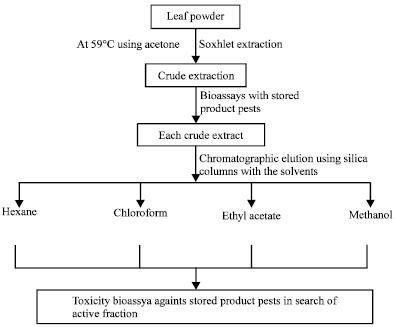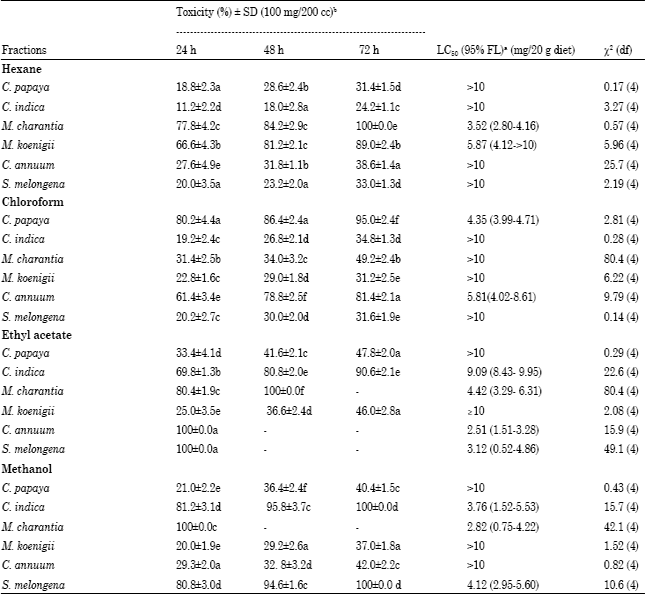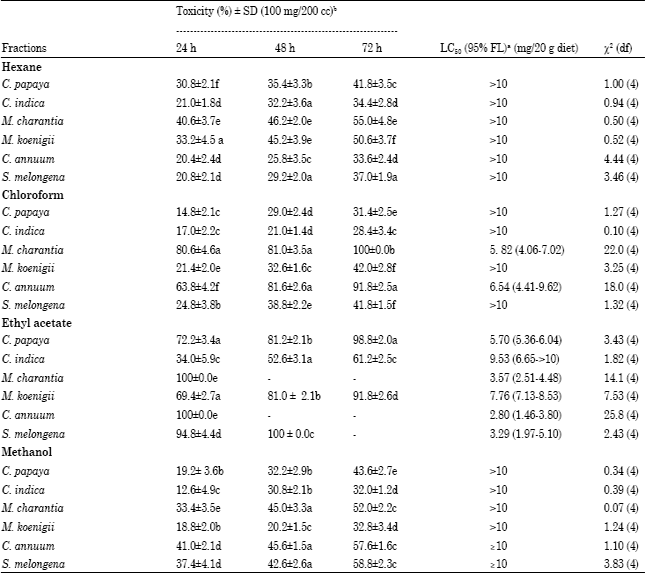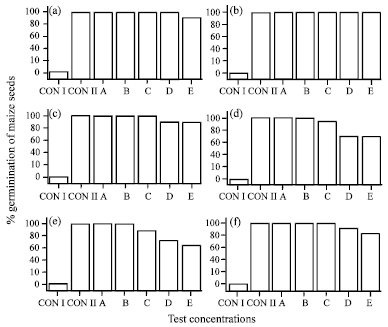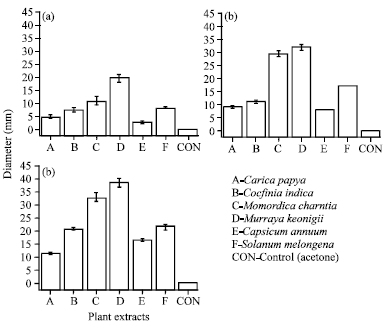Research Article
Efficiency of Different Plant Foliar Extracts on Grain Protection and Seed Germination in Maize
Biology and Biotechnology Division, Indian Institute of Chemical Technology, Tarnaka, Hyderabad 500 007, (A.P), India
P. Devanand
Biology and Biotechnology Division, Indian Institute of Chemical Technology, Tarnaka, Hyderabad 500 007, (A.P), India









